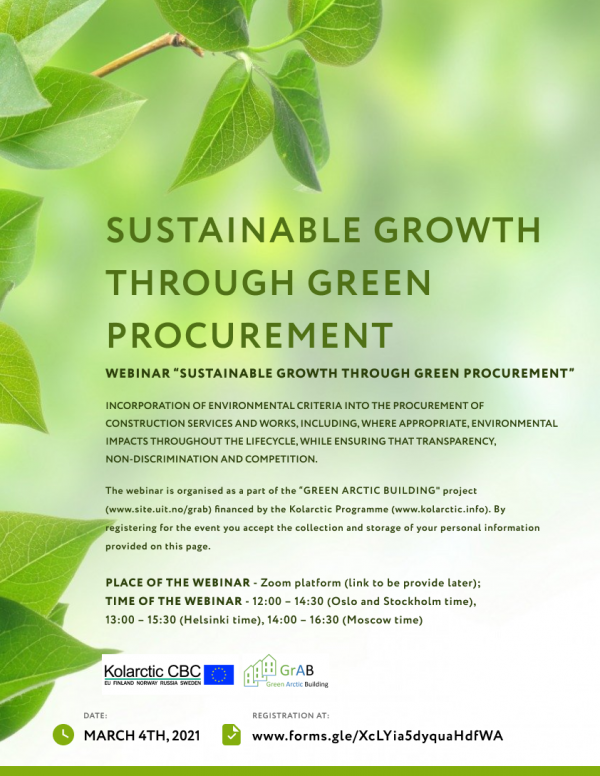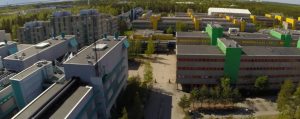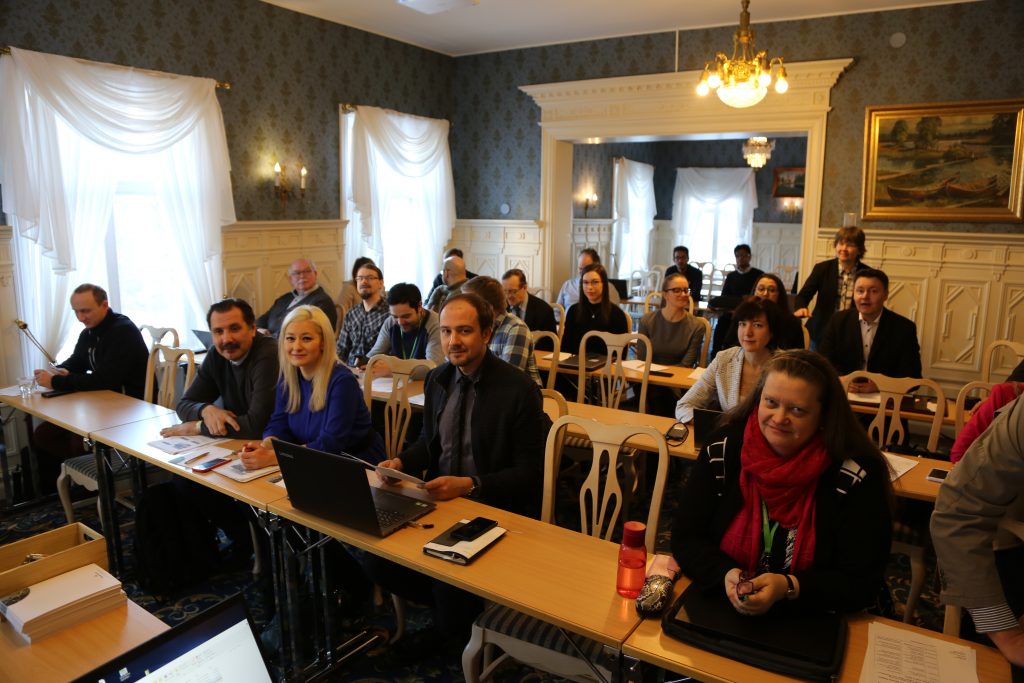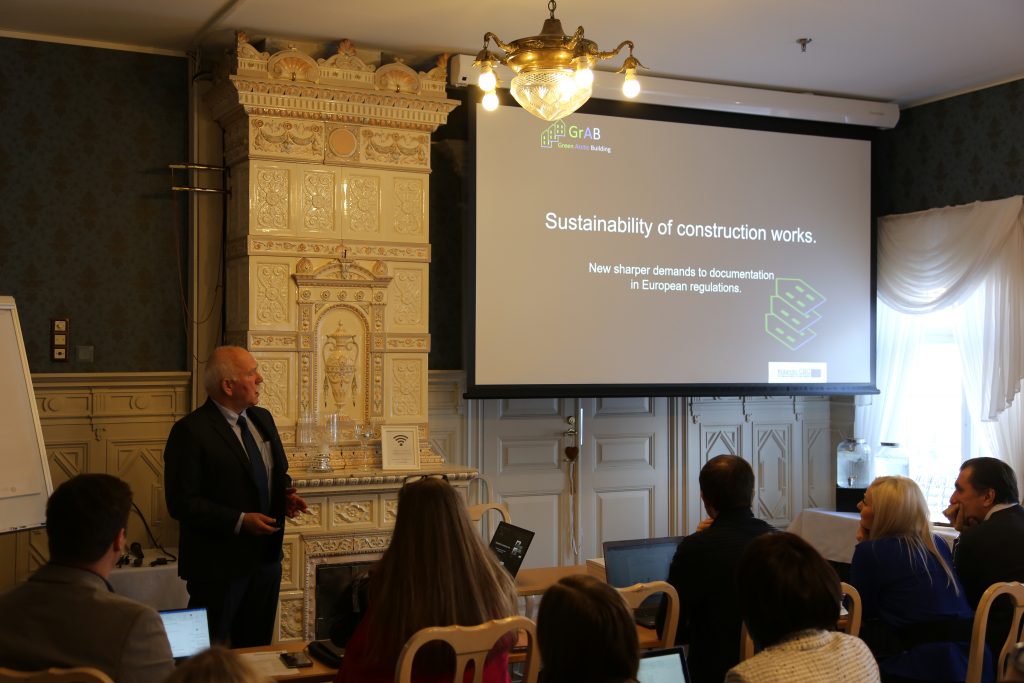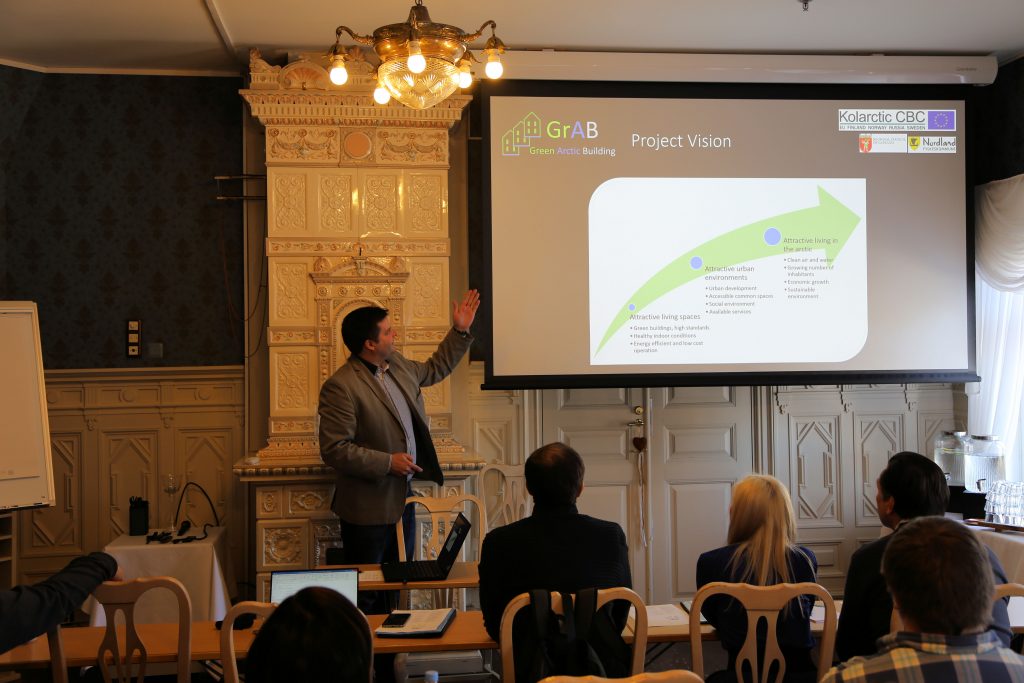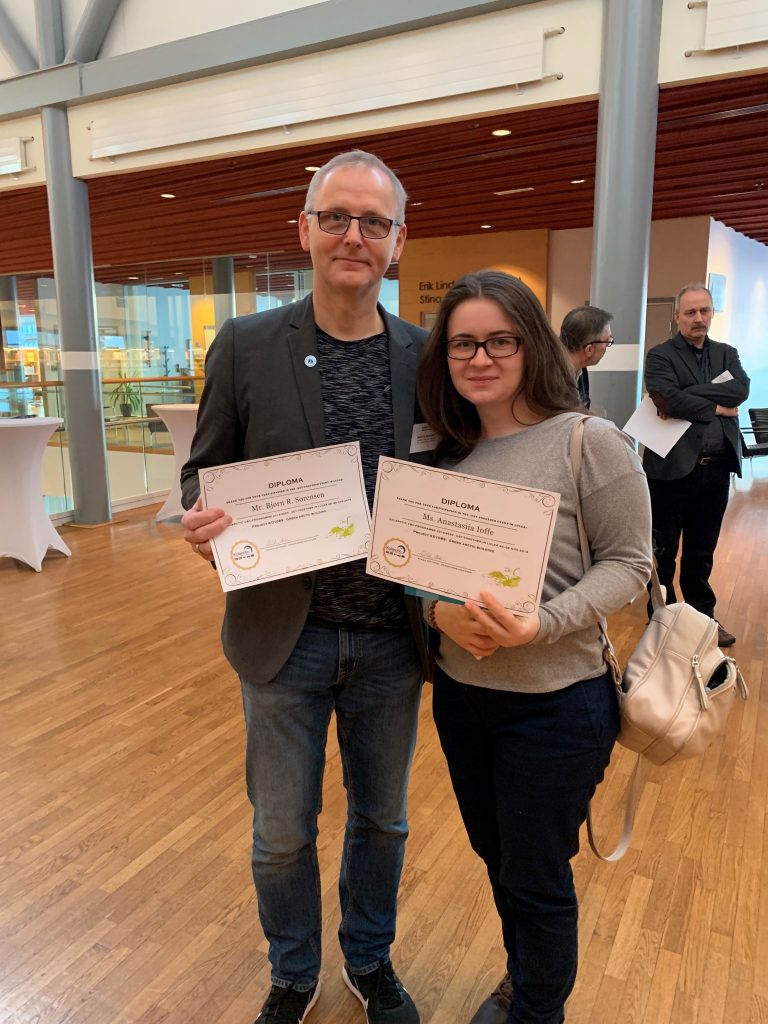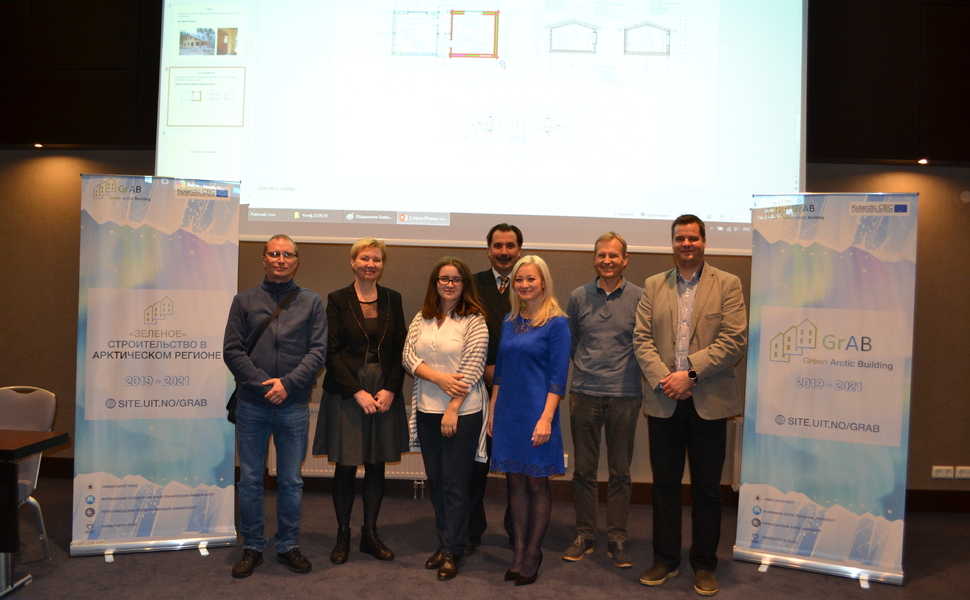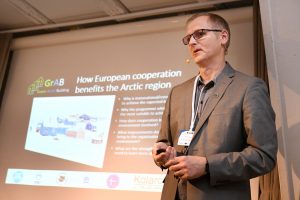The model objects are one-story buildings with dimensions in the plan in axes 12.45×5.5 m with a pitched roof with a slight slope. The height of the building along the ridge of the highest part is 4.3 m. The building consists of two square ones, connected by a vestibule. The right and left parts of the building have the same area and the same internal volume, which is necessary for further research and comparison of the two structural wall designs and construction technologies.
For both parts of the building, the structures of the roof, basement and foundations are the same. The foundations are concrete, made from solid concrete blocks. The floor is made of timber, insulated. Its total thickness is 465 mm, including the thickness of the heat-insulating layer – 300 mm.
The roof is gable, insulated. The load-bearing structures of the roof are represented by a system of layered rafter legs supported by longitudinal walls and a ridge girder. Metal shingles were used as roofing material. The total thickness of the roof structure is 450 mm, including the thickness of the insulating layer – 350 mm.
The structures of the outer walls and the technology of their construction are different for the parts of the building. The structures of the walls of the parts of the building are made according to two different technologies: one part according to the timber framing technology, the second – according to the double-stud technology. The total thickness of the wall frame structure is 350 mm. The supporting frame is represented by uprights with a section of 50×200 mm, crossbars of the same section and a system of struts. Along the supporting frame in the horizontal direction there is a frame of a cross layer of insulation 50 mm thick. The total thickness of the insulating layer is 250 mm. Mineral wool insulation “ISOROC Super Warm” was adopted as the main insulation material for the frame wall. During the construction of a building in Petrozavodsk, it was decided to use this insulation for the structures of the lower floor and roof. A similar decision was made for the building in Murmansk. On the outside of the insulation layer, a wind-waterproof layer is provided from the Izospan AM membrane. On the inner side of the heat-insulating layer, a vapor barrier layer was designed from a membrane Izospan V. As the outer finish of the frame part, a sheathing of a planed matchboard with a thickness of 20 mm along a lathing made of a bar with a cross section of 50×50 mm was used. The cladding was treated with an antiseptic compound for outdoor use. The cladding of the inner surfaces of the walls of the frame part, and the filing of the ceilings are made of coniferous plywood, 12mm thick. For the object in Murmansk, the interior decoration of the walls of the frame part, and the filing of the ceilings are provided from the wall panels.
The average thickness of the wall structure made using the double-frame technology is 472 mm. Insulation layer thickness – 126 mm. Chips and sawdust, which are waste in the production of log elements, are taken as the main heat-insulating material. To compensate for the possible settling of the backfill insulation, membranes from a board 25 mm thick are provided in the wall structure. Outside, the log part is treated with Tikkurila Valtti Log, a weather-resistant log antiseptic after mechanical cleaning and polishing. The surfaces of the logs indoors are treated with matt acrylic lacquer Tikkurila Paneeli Assa.
One of the conditions for the comparability of research results in different climatic zones is the identical orientation of the experimental buildings. The blank wall of the building should be oriented to the north, both in the city of Murmansk and in the city of Petrozavodsk. At the same time, the north-facing wall is divided into three zones in each part of the building. A separate type of alternative thermal insulation material is used in each zone. For the frame part of the building, alternative heat-insulating materials are: natural insulation Flaxan Mix (fibrous material made from eelgrass, flax (85%) and lavsan (15%)), ecowool and linen mats. Linen mat is an alternative thermal insulation material for a double-stud wall. The third zone in the wall of a double-stud house is represented by an air gap without additional insulation. The thickness of the insulating layers is calculated in accordance with the climatic conditions of the city of Murmansk. As a result of the design, the overall energy efficiency class of A (very high) for the entire building was achieved.
To carry out research, the experimental buildings are equipped with a set of engineering systems and a system for monitoring temperature and humidity in the layers of enclosing structures. The installation of power supply, heating and ventilation systems was completed in November and December 2020. Each part of the building was provided with a separate set of engineering systems. This is necessary to ensure independent accounting of energy costs for each part of the building and for each system, and subsequent comparison.
As the main heating system for the experimental house, an electric heating system was implemented with convectors located on the walls inside rooms. Eight GLAMOX heaters were used as electric heating devices. The number of electric heating devices and their location were determined according to heat engineering calculations. The total heat load is 8 kW. Electric heating convectors GLAMOX heating H40 WiFi are equipped with a programmable wireless thermostat WT, which allows to remotely regulate the heating to the desired level in the room.
Supply and exhaust ventilation with mechanical induction with recuperation was chosen as the main ventilation system. The building ventilation system was implemented with two independent systems for each part of the building. An independent system is provided for each system, consisting of a system of air ducts, valves and a NOVA-300 air handling unit.
During the construction of the building, the sensors of the monitoring system were installed in the layers of building structures. The monitoring system is represented by the measuring subsystem and the reference subsystem. The reference system is based on Russian-made electronic components certified as a measuring instrument. The measuring system is based on Chinese-made electronic components. The building provides 25 measurement nodes in key areas of the enclosing structures (in the walls – near window openings, at different height levels, in zones with various insulation materials; in the floor; in the roof structure). Each node consists of 8 or 9 sensors, depending on the design, which are located at the boundaries of the layers.
